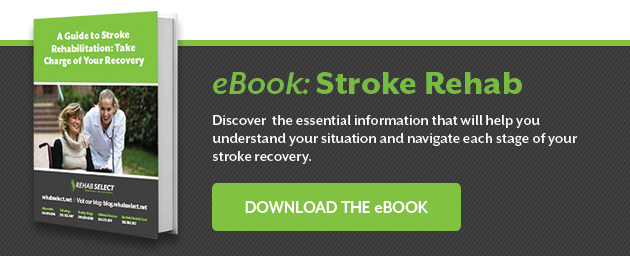
Stroke affects 795,000 people in the United States each year. It’s a leading cause of long-term disability and reduces mobility in more than half of survivors over 65, impacting their mental and physical well-being and quality of life.
Many patients have difficulty moving around, speaking, or performing regular activities after a stroke. While medication helps treat the initial cause and the resulting complications, physio for stroke patients is essential for regaining normal functions and sustaining long-term benefits.
Let’s review why physical activity after stroke is so critical and how physio for stroke patients accelerates recovery.
What Happens After a Stroke?
Before discussing the importance of physical activities for stroke patients, we must first understand the changes caused by a stroke. An ischemic stroke occurs when blood flow to the brain is compromised due to a blockage in the artery. Meanwhile, a hemorrhagic stroke happens when blood leaks into the brain from a ruptured artery.
Blood flow carries oxygen to support all brain functions. When the oxygen level is disrupted and drops to a dangerously low level during a stroke, brain cells die off, and portions of the brain cease to work. A stroke often damages parts of the brain responsible for controlling movement, coordination, and balance, leaving patients with these physical impairments:
- Paralysis (usually on the affected side of the body}
- Numbness in the extremities (hands, feet, arms or legs)
- Difficulty speaking and closing the mouth fully
- Difficulty swallowing and drinking
- Dizziness
- Difficulty breathing
- Loss of balance and coordination
- Fainting or going unconscious
- A sudden, excruciating headache
Many patients experience complications after a stroke. For example, they may retain an uneven appearance to their face due to the loss of muscle function on one side. They may also have trouble lifting, standing, or picking up objects due to muscle weakness.
While emergency measures aim to remove the blockage or stop the bleeding, long-term treatments like physical activities for stroke patients are essential for preventing and improving these complications.
What is Physio for Stroke Patients?
According to the National Heart, Lung and Blood Institute, exercise helps prevent and control many stroke complications. Chartered Society of Physiotherapy found that high-intensity activities for stroke patients begun within 24 hours after a stroke can improve outcomes, helping them regain mobility, strength, and independence.
The brain cannot regenerate cells lost during a stroke. However, the appropriate physical activities for stroke patients can enhance neuroplasticity, allowing the brain to reorganize existing cells to compensate for the loss.
Physical activity after stroke can be challenging because most patients have lost muscle function, balance, and strength. During treatment, physiotherapists help patients leverage movement-based therapies, encouraging the brain and body to relearn essential skills through repetition and targeted exercises.
The Benefits of Physical Activity After Stroke
Physical activities for stroke patients help them restore mobility and physical functions to regain independence, improve range of motion, and address muscle weakness. They also enhance balance and coordination to reduce fall risks and improve the patient’s ability to perform precise movements like buttoning a shirt or gripping objects.
Physio for stroke patients promotes neuroplasticity by stimulating the brain to form new neural pathways and facilitate functional recovery. These treatments also help manage spasticity (muscle tightness) and improve muscle tone to minimize discomfort while facilitating movements.
The appropriate treatments help prevent secondary conditions like contractures, pressure sores, and deep vein thrombosis (DVT). A home exercise program and follow-up visits support continuous improvements for long-term recovery. Physiotherapy also teaches patients how to use assistive devices or modify activities to compensate for impairments.
Physio for stroke patients goes beyond improving physical functions. Experiencing progress and achieving milestones boosts confidence while reducing anxiety and depression, enhancing patients’ emotional well-being. They can also reintegrate into daily life and reengage with social activities as they regain functional independence.
What Physio for Stroke Patients Entails
In general, patients should commit 45 minutes daily to physical therapy. The initial goal of these sessions is to get the patient moving. Then, the physiotherapist will help the patient regain strength, coordination, and function.
A physiotherapy treatment plan typically includes the following:
- Assessment and goal setting to personalize the treatment plan based on the patient's abilities and recovery potential.
- Exercise therapy to strengthen weakened muscles, increase the range of motion, and improve balance and coordination.
- Gait training to help the patient relearn walking.
- Functional task training to practice real-life activities like reaching, gripping, and dressing to regain independence.
- Manual therapy to reduce spasticity and improve movement.
- Education and support to help prevent further complications, maintain progress at home, and adjust the environment for safety.
Physio for stroke patients is often conducted in a medical clinic resembling a mini gym. The physiotherapist works with the patient one-on-one, providing instructions on each assigned activity. Treatments may use weights, treadmills, balance balls, mats, and special medical equipment to encourage movement.
Some rehab facilities incorporate advanced tools and technologies to accelerate progress. These may include treadmills with body weight support to help relearn walking, electrical stimulation to improve muscle functions, and robotic devices to assist in repetitive movements that promote neuroplasticity.
Patients should follow a treatment plan prescribed by a physiotherapist. Independent workouts without proper guidance and supervision may exacerbate symptoms, worsen complications, and increase the risk of further injury.
Physio for Stroke Patients in Alabama
Seek a reputable facility that offers comprehensive stroke rehab services to maximize the outcomes of physical activities for stroke patients and accelerate the recovery journey.
Rehab Select’s five state-of-the-art facilities across Alabama provide access to therapists experienced in stroke rehabilitation. We design personalized physiotherapy treatment plans and provide equipment and guidance to help patients regain their independence. Learn more about our stroke rehabilitation services and schedule a tour to start your rehab journey.





